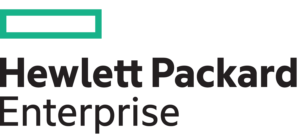 What is E911?
What is E911?
E911 is short for Enhanced 911 which is the portion of the 911 system that attaches a location to the call when using VoIP, like Total Voice. E911 is important to ensure that 911 dispatchers can receive accurate location information about emergency callers using VoIP.
Why is it important?
The increased mobility flexibility that you get through VoIP such a popular product is also what makes it difficult to locate calls in an emergency. STL allows Total Voice users to set up a physical address to appear when dialing 911 from a VoIP phone or device, which can be updated as you move from office to home to anywhere.
Here’s more information from the U.S.Enhanced 911 – Wireless Services
The FCC’s wireless Enhanced 911 (E911) rules seek to improve the effectiveness and reliability of wireless 911 services by providing 911 dispatchers with additional information on wireless 911 calls. The FCC’s wireless E911 rules apply to all wireless licensees, broadband Personal Communications Service (PCS) licensees, and certain Specialized Mobile Radio (SMR) licensees.
The FCC has divided its wireless E911 program into two parts – Phase I and Phase II. Under Phase I, the FCC requires carriers, within six months of a valid request by a local Public Safety Answering Point (PSAP), to provide the PSAP with the telephone number of the originator of a wireless 911 call and the location of the cell site or base station transmitting the call.
Under Phase II, the FCC requires wireless carriers, within six months of a valid request by a PSAP, to begin providing information that is more precise to PSAPs, specifically, the latitude and longitude of the caller. This information must meet FCC accuracy standards, generally to within 50 to 300 meters, depending on the type of technology used. The deployment of E911 requires the development of new technologies and upgrades to local 911 PSAPs, as well as coordination among public safety agencies, wireless carriers, technology vendors, equipment manufacturers, and local wireline carriers.
Kari’s Law and RAY BAUM’S Act
In August 2019, the Commission adopted rules to implement Kari’s Law, which requires multi-line telephone systems (MLTS) – such as those used by hotels and campuses – to allow users to dial 911 directly, without having to dial a prefix such as a “9” to reach an outside line. To facilitate building entry by first responders, Kari’s Law also requires MLTS to provide notification to a central location for the facility where the MLTS is installed, such as a front desk or security office, when a 911 call is made.
Also in August 2019, pursuant to Section 506 of RAY BAUM’S Act, the Commission adopted rules to ensure that “dispatchable location” information, such as the street address, floor level, and room number of a 911 caller, is conveyed with 911 calls so that first responders can more quickly locate the caller. The new rules require the provision of dispatchable location information, to the extent technically feasible, with 911 calls from MLTS, as well as with 911 calls from fixed telephony, interconnected Voice over Internet Protocol (VoIP) services, Internet-based Telecommunications Relay Services (TRS), and mobile text service.





